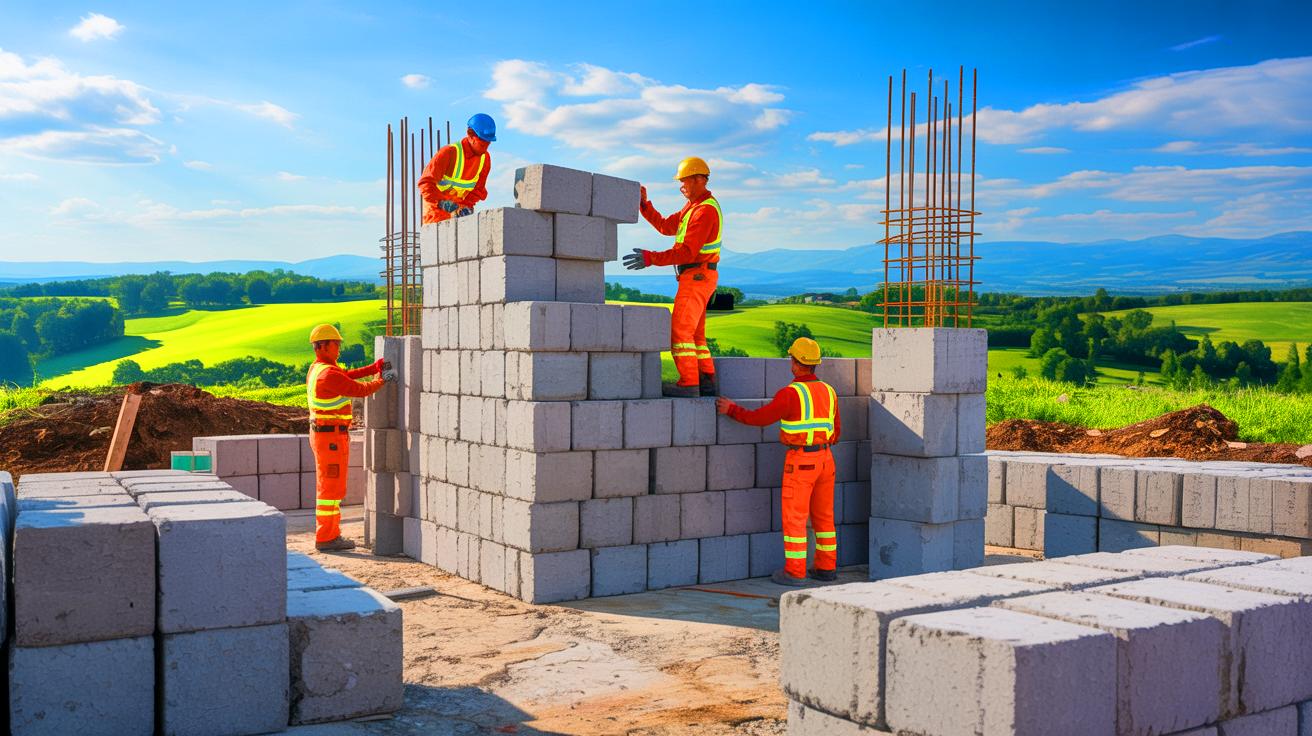- 🌍 Researchers at the University of Portsmouth discovered that a mix of 10% lime and 10% recycled glass significantly strengthens compressed earth blocks.
- 🔬 The study highlighted a remarkable 90% improvement in the compressive strength of these “green” blocks compared to unstabilized versions.
- ♻️ This innovation reduces the need for cement, which is energy-intensive, and supports the transition to a more sustainable construction industry.
- 🏗️ Future research will explore the long-term resilience and other potential applications of recycled glass in construction materials.
The use of recycled materials in construction is gaining momentum as researchers explore innovative solutions to address environmental concerns. A recent study by the University of Portsmouth highlights a groundbreaking discovery: integrating recycled glass powder with lime significantly enhances the strength of compressed earth blocks. This development not only offers a sustainable alternative to traditional building materials but also aligns with global efforts to reduce carbon footprints in the construction industry.
The Role of Recycled Glass in Sustainable Construction
The construction industry has long sought sustainable alternatives to conventional building materials, and the integration of recycled glass presents a promising solution. Compressed earth blocks, typically made from subsoil mixtures, have been stabilized traditionally using cement. However, cement production is energy-intensive and environmentally detrimental, contributing significantly to carbon emissions. Enter recycled glass powder—an innovative stabilizing agent that offers a greener alternative.
Researchers at the University of Portsmouth conducted extensive tests on various mixes of lime and recycled waste glass particles (RWGP), ranging from 0% to 25%. Their findings revealed that a combination of 10% lime and 10% recycled glass powder produced the strongest blocks, exhibiting no cracks even under intense pressure. This breakthrough underscores the potential of recycled glass in reducing reliance on cement, thus paving the way for more sustainable construction practices.
Strengthening Compressed Earth Blocks
The study demonstrated a remarkable 90% improvement in the compressive strength of blocks stabilized with the optimal mix of lime and recycled glass particles. These blocks achieved a compressive strength of 5.77 MPa, a significant increase from the 3.03 MPa observed in unstabilized blocks after a 28-day curing period. Additionally, the tensile strength of these blocks saw a 30% improvement, further validating their structural integrity.
Beyond mechanical properties, researchers employed electron microscopy to examine the microstructural characteristics of the blocks. The absence of visible cracks highlighted the impressive durability and potential longevity of these “green” blocks. This advancement not only promises enhanced performance but also supports the broader goal of achieving a circular economy in construction, where materials are reused and repurposed to minimize waste.
Comparing New Materials and Traditional Methods
The shift towards using recycled glass in construction is part of a broader movement to innovate beyond traditional methods that heavily depend on raw materials. While conventional blocks rely on cement, the introduction of recycled glass components offers an ecologically beneficial alternative. The study’s findings suggest a potential paradigm shift in construction materials, moving towards solutions that prioritize sustainability without compromising strength or durability.
Moreover, the research aligns with similar innovations globally. For instance, Japanese researchers have developed a high-performance geopolymer-based soil solidifier using Siding Cut Powder (SCP) and earth silica derived from recycled glass. These advancements collectively aim to reduce the construction industry’s reliance on conventional materials, promoting a more sustainable and environmentally friendly approach.
Implications for Future Construction Practices
The integration of recycled glass into construction materials represents a significant leap towards sustainable building practices. By reducing the need for cement, which is a major contributor to carbon emissions, the construction industry can significantly lower its environmental impact. Furthermore, using recycled waste helps to address landfill issues, offering a dual benefit of waste reduction and resource efficiency.
The success of this study opens the door to further research into the potential applications of recycled glass in various construction contexts. Future investigations might explore the thermal properties, durability, and long-term resilience of these materials, broadening their applicability in diverse building environments. As the industry continues to innovate, the question remains: How will these advancements shape the future of sustainable architecture and contribute to global environmental goals?
This article is based on verified sources and supported by editorial technologies.
Did you like it? 4.5/5 (28)
